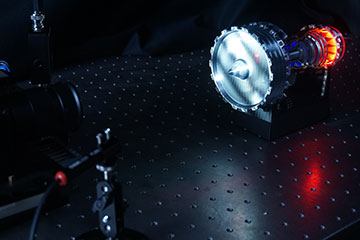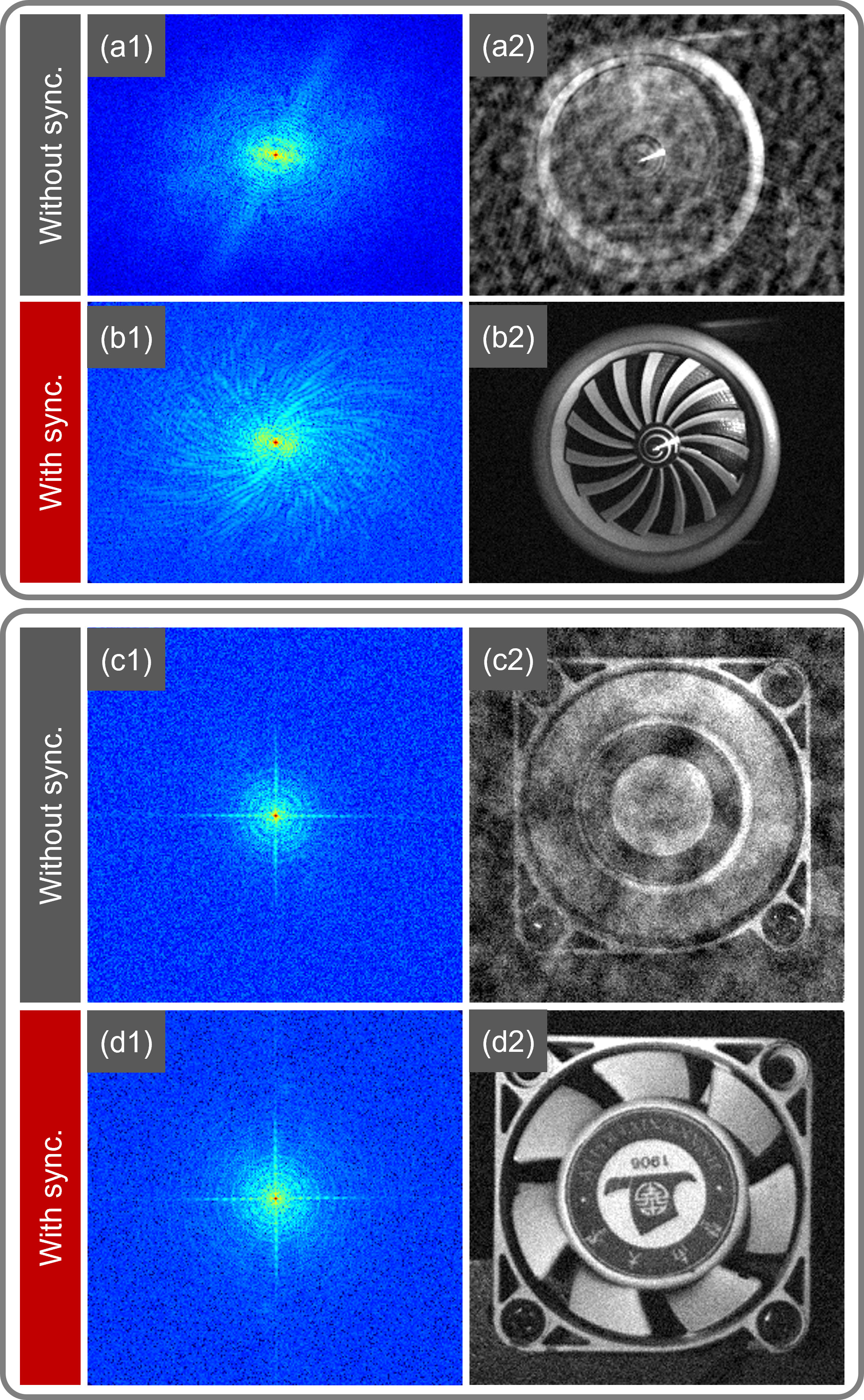
Photograph of the experiment in progress. The pattern projected on the target object can be clearly seen. [Image: Zibang Zhang, Jinan University in China]
Look at a fast-spinning object, and you’re likely to see a blur. This effect may suffice when watching a pinwheel or a figure skater, but it’s completely inadequate for inspecting the performance of a rapidly rotating fan blade in a jet engine—or other devices that lives or property depend on.
Researchers in China have developed a single-pixel imaging system that “freezes” a spinning object, delivering clear still pictures of it (Opt. Lett., doi:10.1364/OL.555872 ). The setup senses the target’s rotational speed, synchronizes an illumination pattern to the moving target and captures images with a single-pixel detector. A digital micromirror device (DMD) controls the illumination at speeds of up to 22 kHz.
Capturing the spin
In practice, many types of rotating objects, from high-speed cutting tools to power-plant turbine blades, need safety inspections to detect misalignment or wear before a catastrophic failure happens. Regular cameras capture only a blur; high-speed photography is expensive and can’t store large quantities of data from long observations. Some researchers have experimented with single-pixel imaging, but they assumed a constant rotation speed—and the spin velocity of real-world motors and propellers often varies slightly.
To demonstrate the system, the researchers showed that it could reconstruct real-time, high-quality still images of a model jet engine rotating at roughly 2170 rpm (top images) and a CPU cooling fan spinning at about 14,700 rpm (bottom images). [Image: Zibang Zhang, Jinan University in China]
A team led by Zibang Zhang at Jinan University developed a light-based way to sense the true rotational speed of a spinning object before trying to snap photos of it. The scientists aimed a 660-nm-wavelength laser beam at the rotating object and captured the backscattered light with a single-pixel detector. A microcontroller analyzed the signal and calculated the rotational speed from the signal’s periodicity. The number of pulses in the waveform of each period correlates to the number of blades in a spinning object.
The experimental setup then triggered a spatial light modulator and DMD to flash a structured light pattern onto the whirling object, and the single-pixel detector picks up this backscatter as well. Fourier analysis separates out the scattered light from the laser and from the structured light pattern.
A clearer image
In their work, Zhang’s group used two benchtop-sized objects: a model of a jet engine, 11 cm across and spinning at 2170 rpm, and a CPU fan rotating at 14,650 rpm. The team found that the faster the target object was rotating, the faster the quality of the reconstructed image converged. At first, both the real-time constructions of the jet engine and CPU fan were blurry, but after 120 seconds the CPU fan image was clear, while the jet engine image appeared clear at 300 seconds.
As long as the target’s rotational speed is less than the maximum operating rate of the DMD, the authors write, the monitoring system should be able to study a wide range of spinning blades, fans and similar objects with no prior knowledge of the spin speed.


